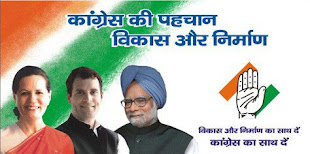Indian Railways which is known as the ‘Life Line of the Nation’ and also for representing the composite culture of the country, has launched ‘Sanskriti Express’ a special exhibition train to commemorate 150th Birth Anniversary of Nobel laureate Kaviguru Rabindranth Tagore, showcasing his life and philosophy. It was flagged off by the Minister of Railways Mamata Banerjee from Rail Museum, Howrah on 9th May 2010. The five coach exhibition train ‘Sanskriti Yatra’ which is a tribute to Kavigur Rabindranath Tagore from Indian Railways, would run throughout the country over the next one year and return to Howrah on 8th May 2011. This train will also be visiting Bangladesh during this period.
The five air-conditioned coaches have been modified at the Liluah Railway Workshop in Howrah to depict Tagore’s achievements and thoughts. The first coach, named ‘Jibon Smriti’ is depicting the life of Tagore through photographs, his reminiscences, about Santiniketan and about Sriniketan.
Born on 7th May, 1861 in Famous Jorasanko Bhawan in Kolkata, Kaviguru Rabindranath Tagore started writing at a very early age of seven. Kaviguru Rabindranath Tagore was an icon of Indian culture. He was a poet, philosopher, musician, writer, and educationist.
In 1884, Tagore wrote a collection of poems Kori-o-Kamal (Sharp and Flats). He also wrote dramas - Raja-o-Rani ( King and Queen) and Visarjan (Sacrifice). In 1890, Rabindranath Tagore moved to Shilaidaha (now in Bangladesh) to look after the family estate. Between 1893 and 1900 Tagore wrote seven volumes of poetry, which included Sonar Tari (The Golden Boat) and Khanika.
In 1901, Rabindranath Tagore became the editor of the magazine Bangadarshan. In 1905, Lord Curzon decided to divide Bengal into two parts. Rabindranath Tagore strongly protested against this decision. Tagore wrote a number of national songs and attended protest meetings. He introduced the Rakhibandhan ceremony, symbolizing the underlying unity of undivided Bengal.
The second coach of the ‘Sanskriti Express’ train namely ‘Gitanjali’ exhibits his poems and songs and sings of Rabindrananth by eminent artists. Rabindranath Tagore became the first Asian to become Nobel laureate when he won Nobel Prize for his collection of poems, Gitanjali, in 1913. Two songs from his Rabindrasangit canon are now the national anthems of India and Bangladesh: the Jana Gana Mana and the Amar Shonar Bangla. 1n 1921, Rabindranath Tagore established Viswabharati University. He gave all his money from Nobel Prize and royalty money from his books to this University. Tagore was not only a creative genius he was quite knowledgeable of Western culture, especially Western poetry and science too. In 1940, Oxford University arranged a special ceremony to honour the poet with ‘Doctorate of Literature’.
The third coach of the train, namely ‘Muktodhara’ exhibits Rabindra Literature, prose, essays, novels, plays and dance dramas-creations & modifications by the poet, Tagore as performer-songs and recitation by him with photographs.
The fourth ‘Chitrarekha’ coach depicts paintings of Tagore with description like, painting from childhood and teenage, portraits, natural stills, landscape, masks, sketches, illustrations and self portraits. In this coach there are also paintings by other renowned artists alike Sri Nadalal Bose, Abanindranath Tagore, Gaganendrananth Tagore, Binod Behari, Ramkinker Bej, Sunayani Devi and Sudhir Khastagir.
The fifth coach namely, ‘Sesh Katha’ is depicting the photographs of Tagore’s last journey and the last days of his life as described by his near and dear ones, poems written during his last days. Kaviguru Rabindranath Tagore passed away on August 7, 1941 in his ancestral home in Calcutta. This coach also has a section called ‘Smaranika’ which is an exhibition and sale of handicrafts from Santiniketan, photo print & handwriting of Rabindranath Tagore, vatika depicting history and indianisation by the poet, ceramic pots and ornaments, gift cards printed by the Committee on Heritage & Culture and books by Rabindrananth Tagore in Bengali and other translated languages.
During its one year’s journey, ‘Sanskriti Express’ will be covering around 100 railways stations to disseminate the Art and Literature of Kaviguru throughout the country.


























0 Comments